Dolphin FB and Officer's Quarters
Forward Battery Compartment/Officer's Quarters/Radio Room
Officer's Quarters
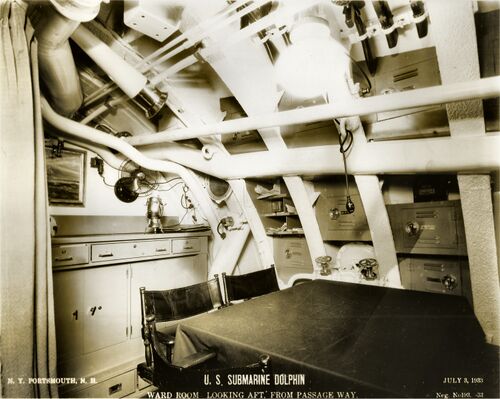
A counter is at the left that held dishes, linens and silver service such as serving bowls and platters and knives and forks. An electric coffee pot sits on the counter with a coffee cup on top that is turned up side down, in Navy parlance, meaning there is no coffee.
Stowed in the overhead are a number of rifles and sub machine guns. A storage unit on the hull has cubbies for each officer for his paperwork. The large rod just below the light fixture is the mechanical linkage for the bow planes.
US Navy Photo Contributed by Roger Torgeson
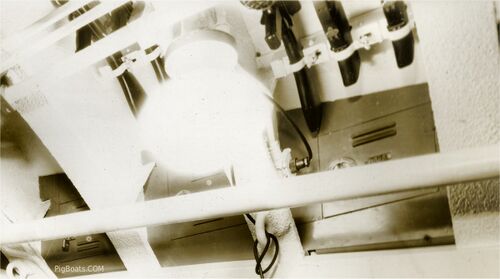
The large rod running left to right in the bottom of the photo is the mechanical linkage for the bow planes.
US Navy Photo Contributed by Roger Torgeson
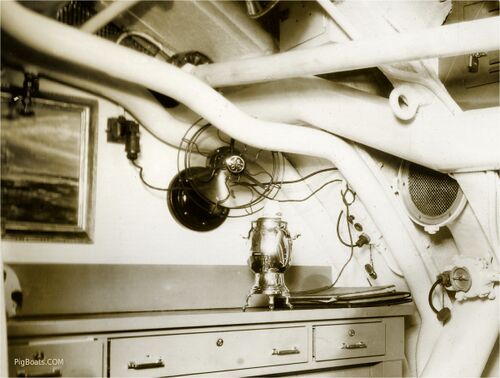
The large rod in the upper part of the photo is the mechanical linkage for the bow planes.
US Navy Photo Contributed by Roger Torgeson

The large rod in the top left of the photo and going through the bulkhead is the mechanical linkage for the bow planes.
US Navy Photo Contributed by Roger Torgeson
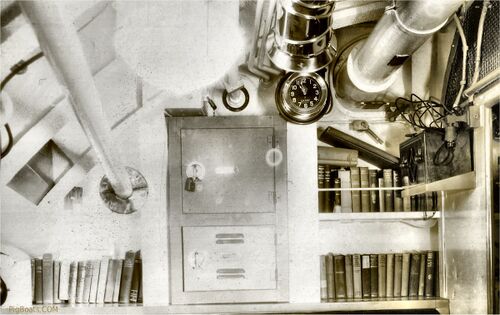
The Chelsea clock shows that this photo was taken at 10:58 in the morning on July 3, 1933. Chelsea Clocks are one of the most accurate marine clocks in the world.
The large rod seen at left in the overhead is the mechanical linkage from Control to the Bow Planes.
US Navy Photo Contributed by Roger Torgeson
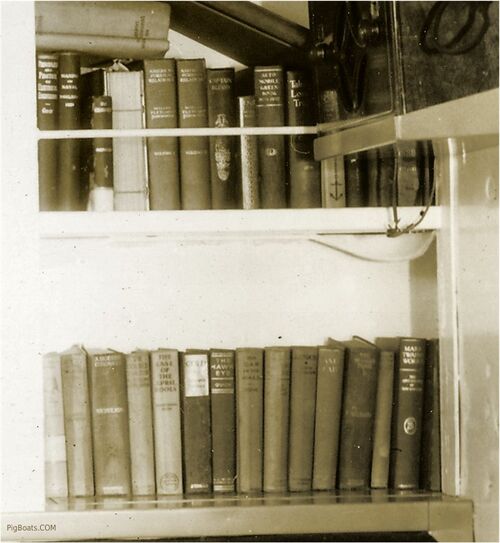
One of the titles is: "The Case of the April Fools" published in 1933 by Christopher Bush. Part of a mystery novel series. Another is: "The Ear in the Wall" by Arthur B. Reeve. The last one we can read the title of is "The Hawk(s) Eye" but we can find no information on it.
This is a good representation of the mixture of books taken to sea between the technical and recreational. Though the books are in the wardroom they are probably available to the whole crew.
US Navy Photo Contributed by Roger Torgeson

US Navy Photo Contributed by Roger Torgeson
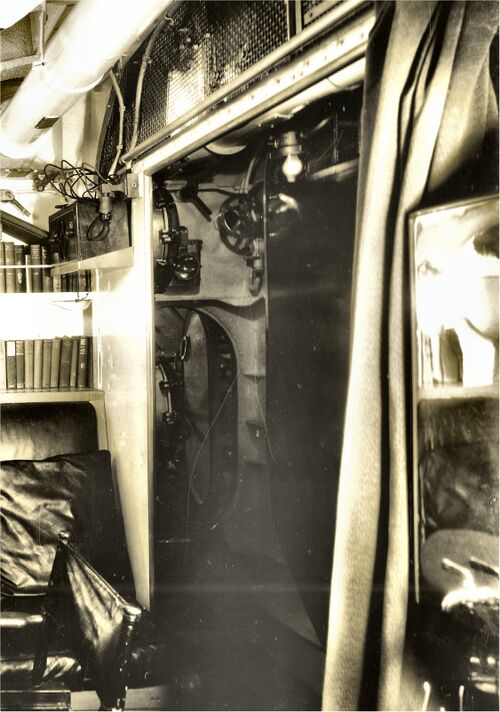
US Navy Photo Contributed by Roger Torgeson
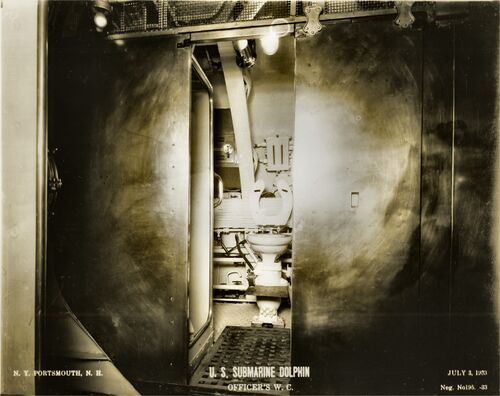
US Navy Photo Contributed by Roger Torgeson

US Navy Photo Contributed by Roger Torgeson
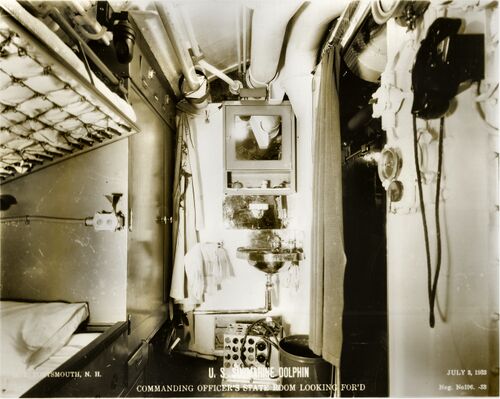
US Navy Photo Contributed by Roger Torgeson

US Navy Photo Contributed by Roger Torgeson

US Navy Photo Contributed by Roger Torgeson

US Navy Photo Contributed by Roger Torgeson
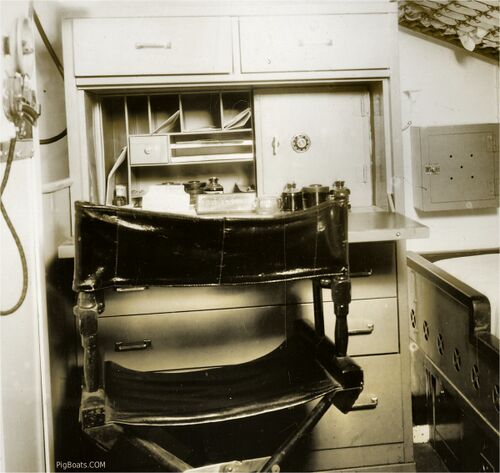
US Navy Photo Contributed by Roger Torgeson
Radio Room
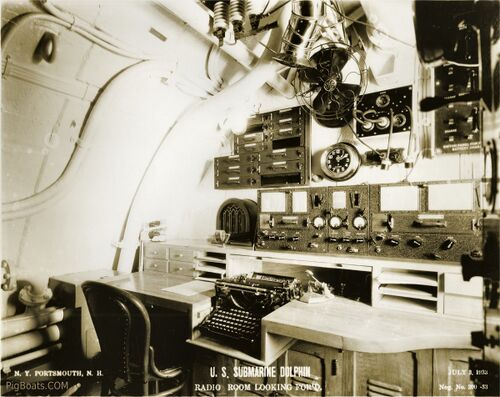
The following quotes are from Jon Krup who served in the Navy in early 1960's. He has these speculations on what we see here; "...the three pieces of equipment [above the desk] appear to be radio receivers.
Above them and to the left (above the loudspeaker), are what appear to be drawers. They are the necessary electronics to change frequency bands on the receivers. Pull one out and install in the radio and you are on the 10 MHz band. Another would put you on the 15 MHZ band, etc. The transmitters are out of the frame to the right. They appear to be either RCA, Collins or possibly Westinghouse receivers, more than likely Collins. Definitely tube type.
The drawers contained capacitors, coils (tuned circuits) and crystals specifically cut for a certain frequency band. There is in the upper right of the panels, a tuning dial - either a moving paper, or a rotating card, back lit, with multiple number scales, coordinated with the (I'm going to call them ) tuning drawers. Put in drawer #1 and use scale #1 to go with it, etc."
US Navy Photo Contributed by Roger Torgeson

The following quotes are from Jon Krup who served in the Navy in early 1960's. "This is definitely the transmitter, more than likely specially designed for submarines. Note that it doesn't "go back into the wall very far.
I see no tuner dial on it, so I have to assume it is crystal controlled. There would be a small box containing crystals especially cut for the frequencies that submarines would use/be authorized to use. The radioman could change crystals depending on their location, time of day, and the atmospheric conditions. By atmospheric conditions, I don't mean weather, but what's happening up in the ionosphere. This could include the proximity of lightning, sun spots and the aurora. These frequencies would be set by the operational orders of that particular boat, and is coordinated with COMSUBLANT and COMSUBPAC.
The transmitter appears to be made by MCA, according to a plaque on the lower left corner, behind the chair. I can't quite make it out, but will, again, nose around the internet.
US Navy Photo Contributed by Roger Torgeson
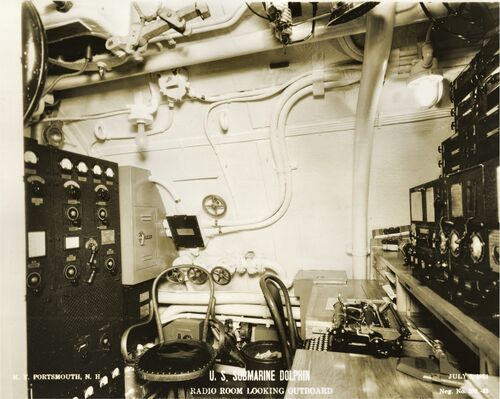
US Navy Photo Contributed by Roger Torgeson
Forward Battery Well
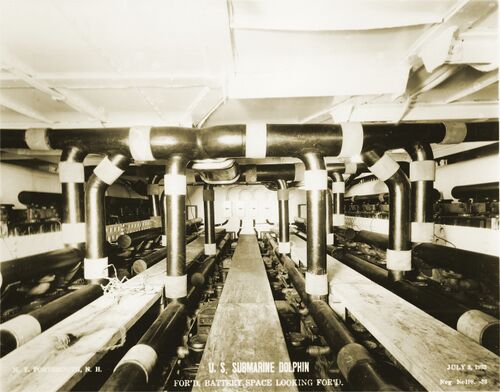
US Navy Photo Contributed by Roger Torgeson
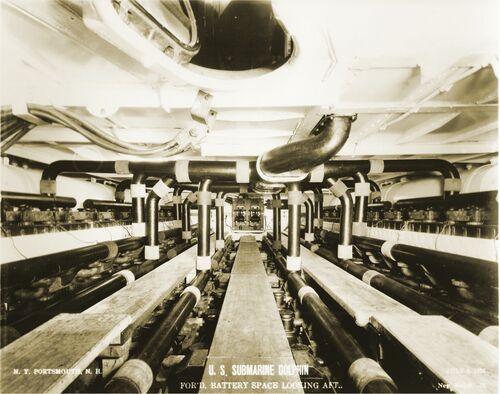
US Navy Photo Contributed by Roger Torgeson
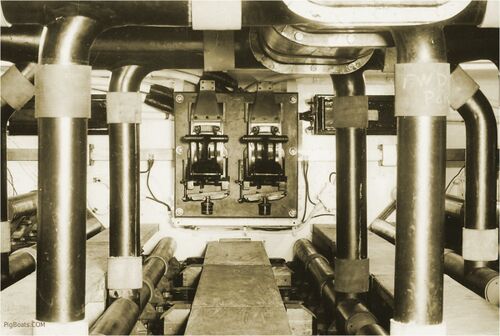
US Navy Photo Contributed by Roger Torgeson
Page created by:
Ric Hedman & David Johnston
1999 - 2023 - PigBoats.COM©
Mountlake Terrace, WA, Norfolk, VA
webmaster at pigboats dot com
